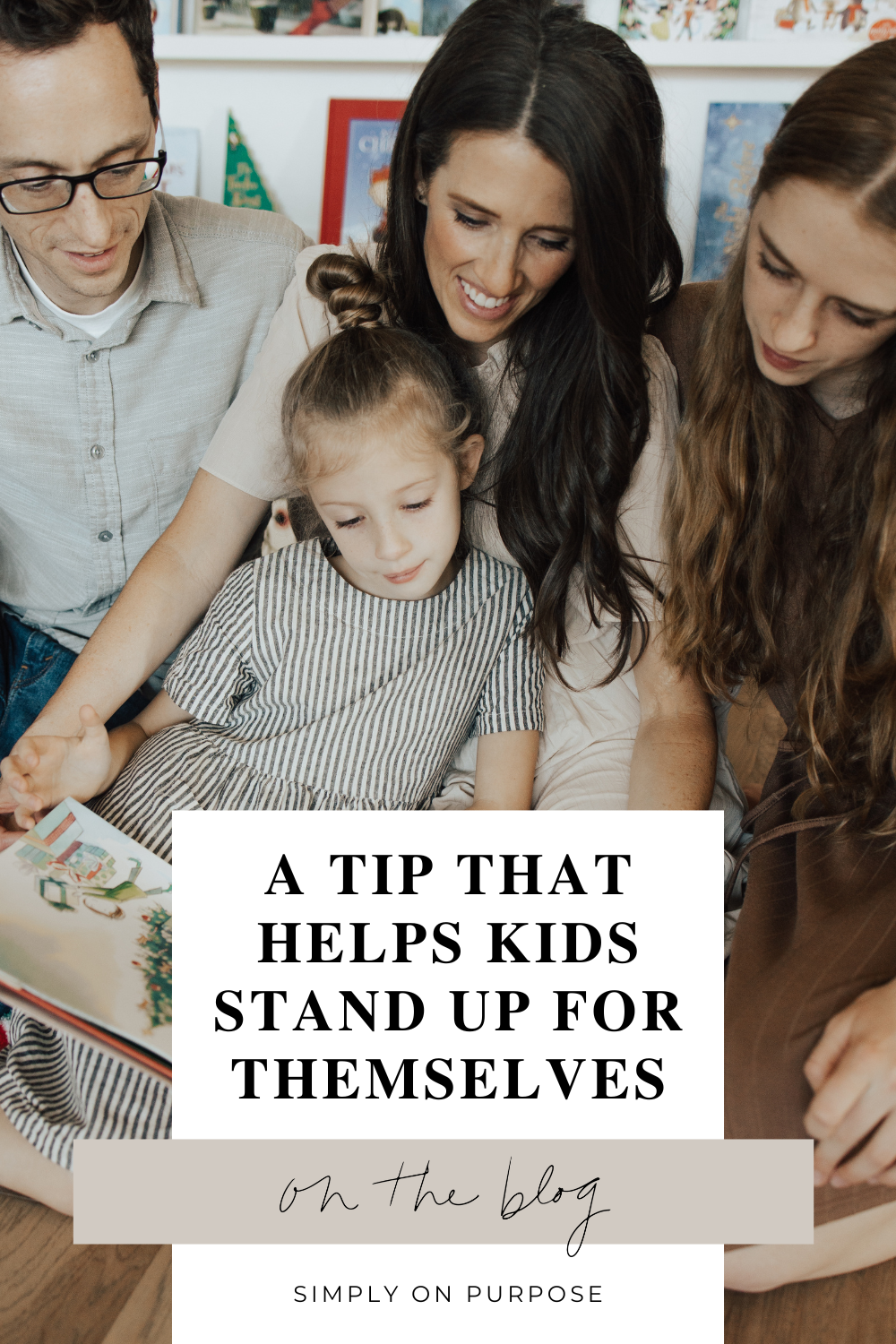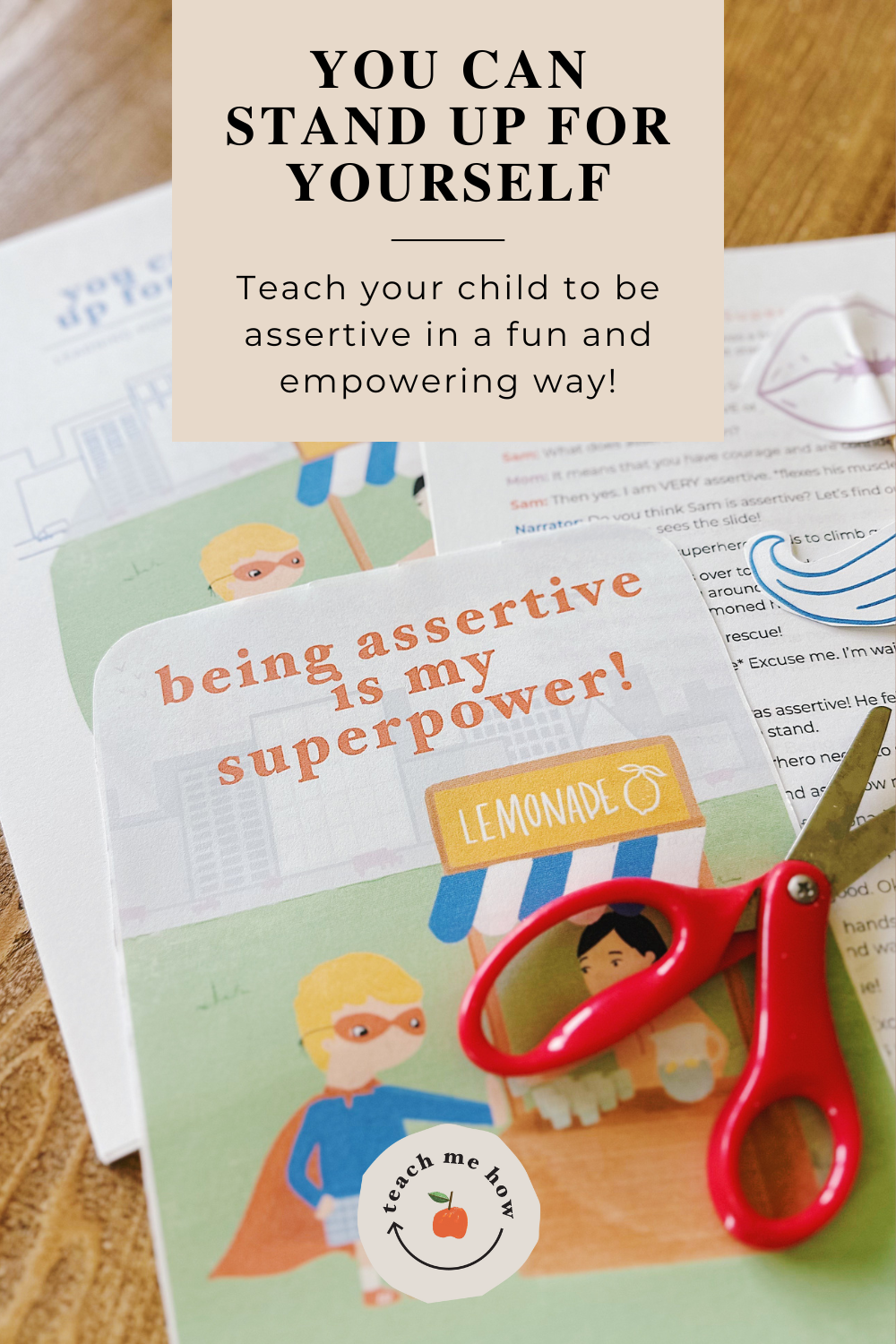Teaching our kids to stand up for themselves is one of the most valuable life lessons we can offer.
One simple but powerful way to do this is by showing them how to use “I” statements. These are phrases like, “I feel,” “I need,” or “I don’t like,” that help children express their needs, feelings, and boundaries clearly and confidently.
Why “I” Statements Matter
When kids are learning to stand up for themselves, knowing how to communicate in a way that doesn’t feel confrontational can make all the difference. Using “I” statements shifts the focus away from blaming others and instead puts the focus on their own feelings and needs. This helps kids express what’s going on inside them without making others feel defensive, which can lead to better understanding and more positive outcomes.
For example, instead of saying “You’re mean,” a child could say, “I feel upset when you talk to me like that.” This changes the conversation from an accusation to an explanation of their feelings. This skill is especially useful when kids feel uncomfortable, misunderstood, or even bullied.
Teaching “I” Statements
So, how can you teach your child to use “I” statements? It’s easier than you might think! Start by modeling the behavior yourself. When you’re frustrated or upset, use an “I” statement like, “I feel overwhelmed when the house is messy.” This shows your child how to communicate their feelings in a calm, non-accusatory way.
Here are some practical steps to help guide your child:
- Start with the basics: Explain to your child that using “I” statements helps people understand your feelings. It’s good to express feelings and needs, AND it’s important to do so respectfully.
- Use role plays: Role playing is a great way to practice. Act out different scenarios where your child might feel uncomfortable or need to speak up for themselves. For example, pretend they’re asking a classmate to stop taking their things. Encourage them to say, “I don’t like it when you take my stuff. I need you to ask first.” Practicing in a low-pressure situation makes it easier for kids to use these skills in real life.
- Praise their efforts: When your child uses an “I” statement, make sure to acknowledge it! Positive reinforcement helps them feel more confident in their ability to stand up for themselves. You might say, “I noticed how you told your friend, ‘I don’t like it when you push me.’ That was really brave!”
You Can Stand Up For Yourself Resource
If you’re looking for more ways to help your child develop confidence and assertiveness, check out my resource: “You Can Stand Up for Yourself: How to Be Brave and Assertive.” The resource is superhero-themed to teach kids that learning to stand up for themselves is a superpower!
The lesson takes kids through what it means to be assertive by using props and acting out a small play. Additionally, the discussion questions, role plays, and helpful tips will help your child find their voice and feel more confident in any situation. Lastly, the activity at the end will help your child create their own “origin story,” where they can celebrate accomplishments in their lives so far, AND get excited for new milestones to come!
Teaching your child to be assertive builds lifelong communication skills. As they grow older, they’ll be better equipped to navigate relationships, set healthy boundaries, and handle conflicts with confidence.
If you are looking for more resources to teach your children life skills, you might like these:
- Just Keep Trying – Teach your child how to use grit and determination to do hard things
- What To Do With The Mad That You Feel – Teach your child how to manage their big feelings
- Be a Cup Filler – Teach your child how to use words to life and encourage others


